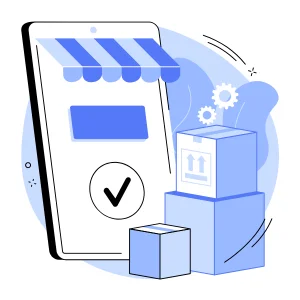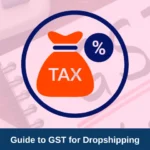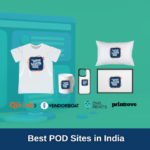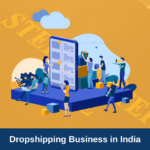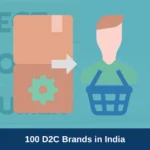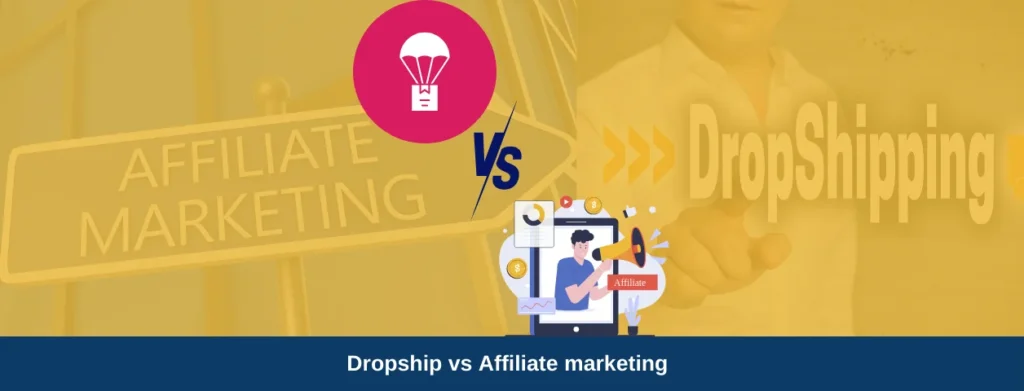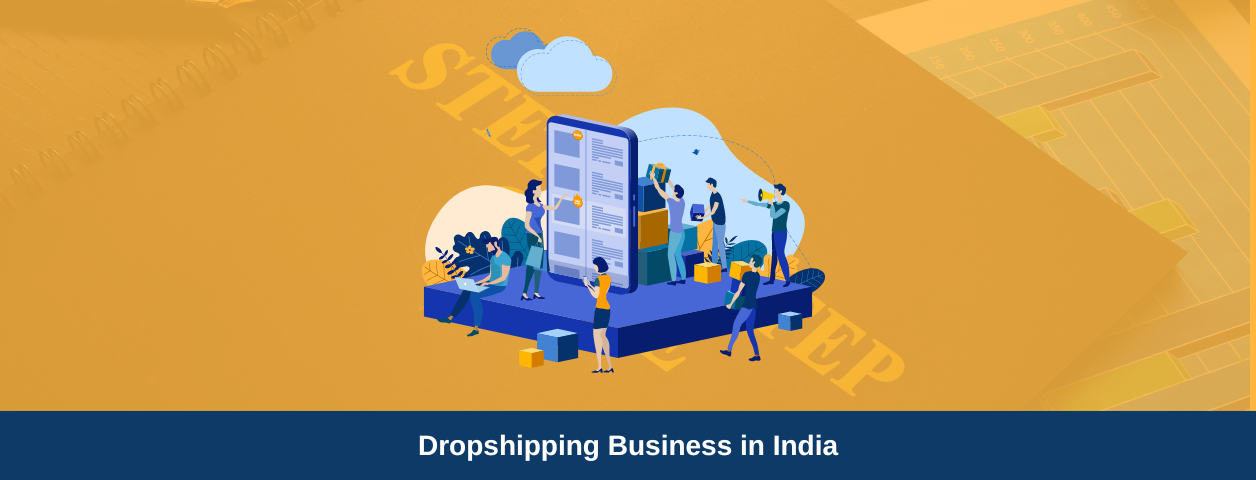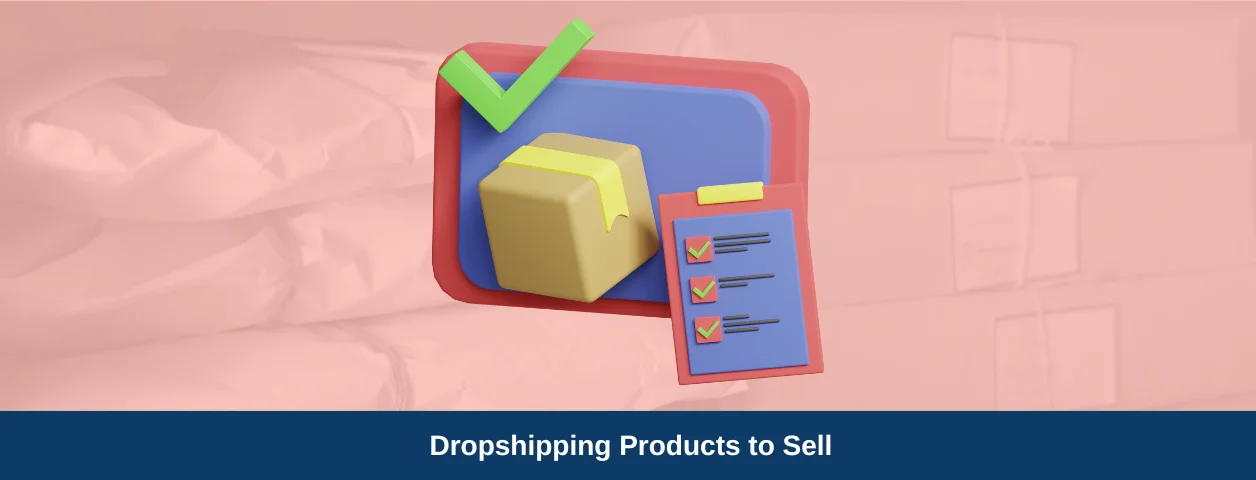The key difference between dropshipping and affiliate marketing at a glance:
While dropshipping involves selling products without owning inventory, affiliate marketing earns commissions by promoting other companies’ products.
You might already know this beginner-level difference between the two business models.
However, knowing which one to start as an online business is more important in 2024.
In this guide, I have also shared the pros-cons, risks, profitability, investment requirment for each, so you can start the online business that suits your needs.
What is Dropshipping?
Dropshipping is a retail fulfilment method where a store sells products without owning or handling Inventory, packing, and shipping.
When a customer places an order, the merchant forwards the order to a third-party supplier who ships the product directly to the customer.
The merchant pays the supplier for the product at a discounted price, while keeping the difference as profit. A healthy profit margin for dropshipping in India is 15%-35%.
How does Dropshipping work in India?
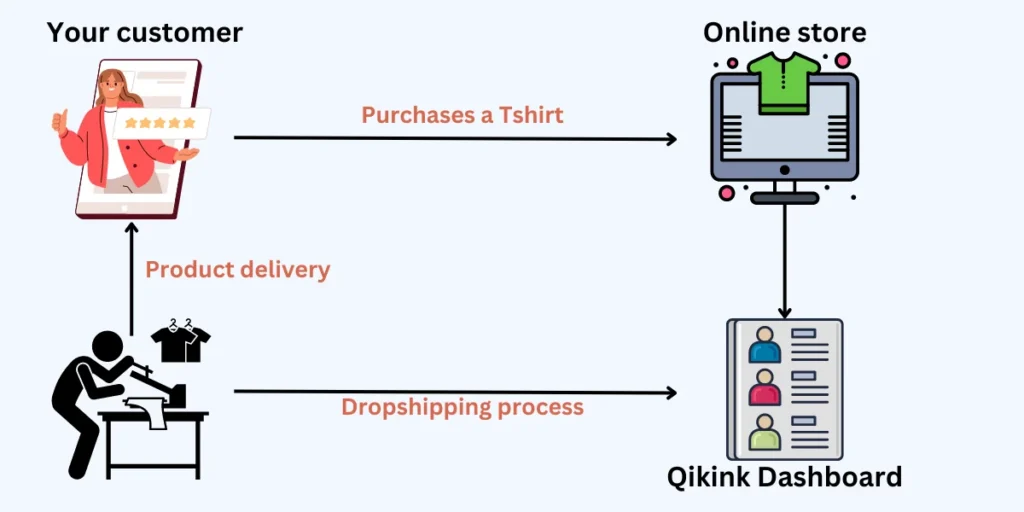
This is how dropshipping simply works in India:
- In India, The customer simply places an order for a product on the retailer’s online store.
- The retailer forwards the order along with the customer’s details to the dropshipping supplier.
- Subsequently, the third-party supplier processes the order, and packages and ships the order directly to the customer under the retailer’s brand name.
- Also, GST is required for dropshipping. According to TaxAdda, any business entity that supplies goods or services with a turnover of more than Rs. 20 lakhs has to register for GST.
Recommended Guide: Dropshipping Legal Requirements in India (2024)
How you earn money with dropshipping?
Earning money through dropshipping involves several key steps:
- The foremost step in earning profits through dropshipping is identifying the right potential products for your online store.
- Choose unique selling points and features that differentiate your products from the competition and attract your target audience’s attention.
- Find a reliable dropshipping supplier for efficient order fulfillment.
- Integrate with the best e-commerce platforms such as Shopify, WooCommerce, Amazon, and eBay, and set up your online store.
- Add your products to the store and establish competitive pricing strategies and payment gateways.
- Develop effective marketing strategies to promote your products, as good marketing can significantly enhance your brand visibility.
- The remaining process, from order processing to shipping, is handled by the third-party supplier.
- You pay the supplier for the product at a discounted price, while retaining the difference as profit.
Following these steps will help you earn profitable returns through dropshipping.
Recommended Guides:
Dropshipping pros and cons
In this section, we will share the pros and cons of dropshipping for your better understanding of this business model.
Pros of Dropshipping:
1. Low Startup cost:
Low startup costs are one of the biggest advantages of dropshipping. You only pay for products when a customer orders them, so you don’t have to invest in inventory upfront. This means less risk if a product doesn’t sell.
2. Easier to experiment with different Products:
Experimenting with different products is easier with dropshipping. You can try out various items and market trends without committing to large bulk orders.
3. Easy to add new products:
Adding new products to your store is simple with dropshipping. There’s a wide range of products available, and you don’t need to keep them in stock or manage inventory. Many drop shippers offer diverse products, so with proper research, you can find the right fit for your store.
4. Location Independence:
You can run a dropshipping business from anywhere with an internet connection, giving you location independence.
5. Less manpower cost:
Dropshipping requires less manpower since you don’t need physical inventory.
6. There’s no hassle with order fulfillment and shipping:
Order fulfilment and shipping are hassle-free with dropshipping. When a customer places an order, the merchant forwards the order to a third-party supplier who ships the product directly to the customer.
Cons of Dropshipping:
1. Less Control:
You have less control over the quality, consistency, and delivery of your products.
2. Limited product Utilization:
While dropshipping offers a wide range of products, you’re limited to what your suppliers have in stock.
3. Low Profit Margin:
Since you’re purchasing products from a third party, you’re paying a higher price for each item. So your profit margins are lower than they would be with e-commerce.
4. Potential Issues:
Sometimes you deal with potential issues like order delays, Manual errors, or returns from customer orders.
5. Lack of control over the customer experience:
You have little control over the customer experience, which can be affected by factors like product quality, shipping times, and customer service.
6. Dropshipping has more competition:
Dropshipping faces stiff competition, as other sellers may offer the same products from the same drop shippers. Finding a unique selling point becomes crucial in this scenario.
💡 If you’re interested in starting a dropshipping business with minimal risk and investment, Qikink offers a great solution.
Here’s how Qikink can help you get started with dropshipping for free:
- Free to use for beginners with no monthly fees (pay only when you get orders)
- Effortless inventory management with on-demand printing and real-time tracking
- No upfront costs or initial investment required
- Wide range of over 100+ print-on-demand product variations to choose from, including apparel, accessories, and home goods
- Affordable custom printing solutions allowing you to add your unique designs and branding
- Easy integration with popular platforms like Shopify and WooCommerce
- Competitive pricing for favorable profit margins
- Free custom branding services to enhance customer satisfaction
What is Affiliate marketing?

Affiliate marketing is online commission based marketing where individuals, known as affiliates, actively promote products or services to customers via unique affiliate links. When a customer purchases the product or service through the affiliate link, the affiliate earns a commission for every sale.
How does Affiliate marketing work in India?
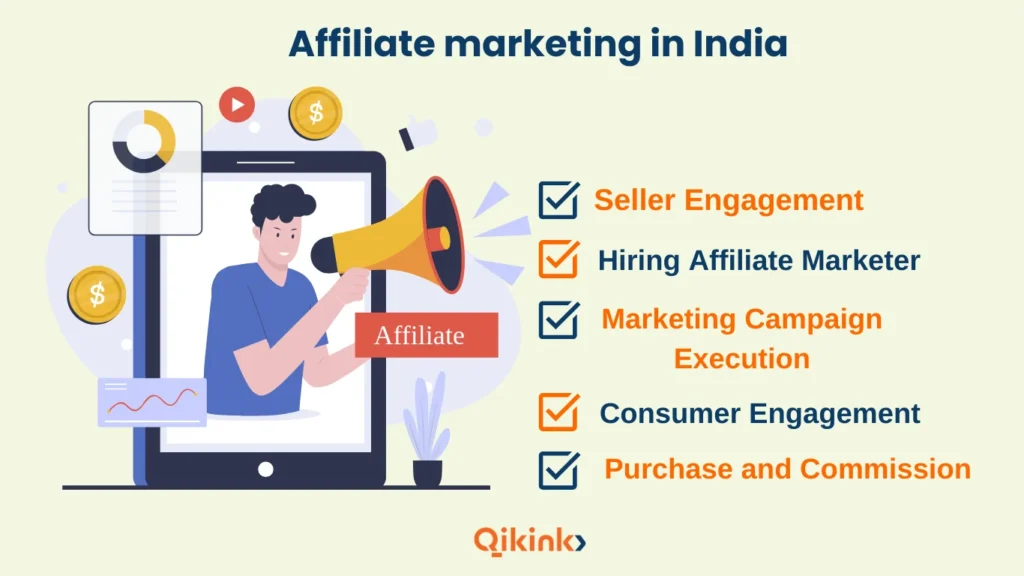
In India, affiliate marketing functions through the collaboration of three primary parties: the seller, the affiliate marketer, and the consumer. Here’s a breakdown of how these parties interact in a typical affiliate marketing scenario:
- Seller Engagement:
A seller, be it a business or an individual, seeks to promote a new product or expand their audience reach.
- Hiring Affiliate Marketer:
The seller hires an affiliate marketer who is familiar with their target audience or niche.
- Marketing Campaign Execution:
The affiliate markets the product to their existing network of consumers, either using advertisements or embedding links within emails, blog posts, videos and so on.
- Consumer Engagement:
The consumer sees an ad from the affiliate marketer, clicks on it and is redirected to the seller’s site.
- Purchase and Commission:
If the consumer makes the purchase, the seller pays the affiliate marketer an agreed-upon commission.
How you earn money with affiliate marketing
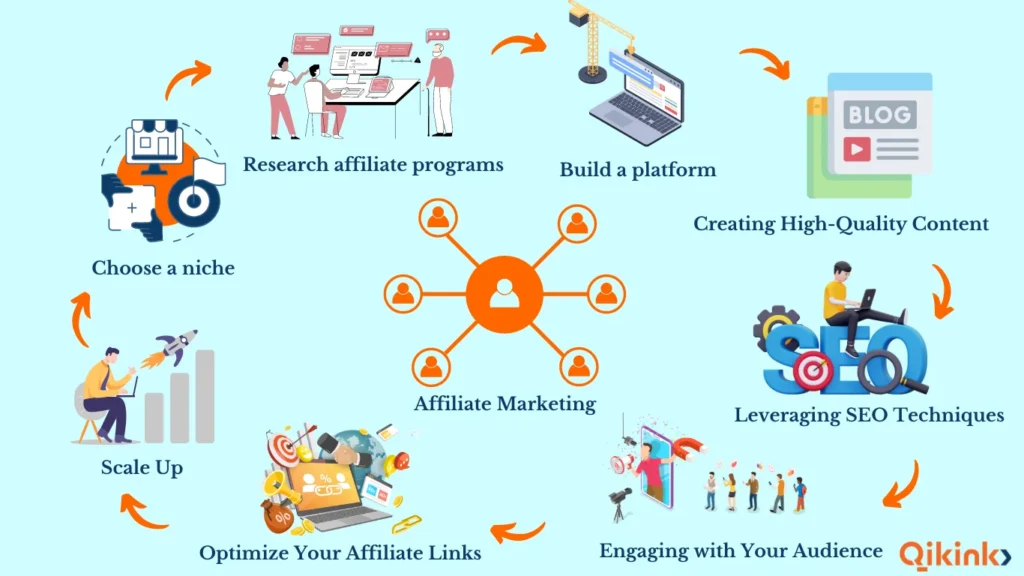
Earning money through affiliate marketing involves several key steps:
1. Choose a niche:
Select a specific area of interest that aligns with your expertise and has a demand for products or services.
2. Research affiliate programs:
Look for reputable affiliate programs that offer products related to your niche. Consider commission rates, cookie durations, and support.
3. Build a platform:
Create a website, blog, or social media presence to promote affiliate products and engage with your audience.
4. Creating High-Quality Content:
To earn money with affiliate marketing, focus on creating high-quality content that educates and engages your audience. Use various formats like blog posts, videos, and infographics to cater to different preferences.
5. Leveraging SEO Techniques:
To earn money with affiliate marketing, leverage SEO techniques to drive organic traffic. Optimize content for keywords, enhance website performance, and build quality backlinks for better visibility on search engine results pages (SERPs) in India.
6. Engaging with Your Audience:
To earn money with affiliate marketing, engage with your audience by responding to comments, messages, and social media interactions.
7. Optimize Your Affiliate Links:
To make more money with affiliate marketing, optimize where you put your affiliate links. Make sure they’re easy to find but don’t overdo it. Use relevant links, banners, and pages. Also, include affiliate links in your email marketing along with helpful content. Using a tool to manage your affiliate links can keep things organized.
8. Track and Analyze:
Regularly monitor your campaign performance using tools like Google Analytics and affiliate network dashboards. Analyze key metrics such as traffic and revenue to optimize your strategies in India.
9. Scale Up:
Expand your business by diversifying income streams, exploring new niches, and automating tasks. Stay flexible to adapt to the changing landscape of affiliate marketing.
By effectively implementing these strategies and consistently providing value to your audience, you can earn commissions and generate passive income through affiliate marketing.
Affiliate marketing pros and cons
Pros of Affiliate Marketing
Low Start-Up Costs:
Minimal investment is needed compared to traditional businesses; no manufacturing, inventory management, or customer service hassles.
Affiliate marketing is appealing because it can generate money passively. Once you set it up, affiliate links can keep making you money even if you’re not actively promoting products. This means you can grow your earnings without constantly working on it.
Diverse product options:
Access to a diverse range of products and services across various industries, enabling marketers to choose products that align with their niche and audience for successful promotions and conversions.
Diverse Income Streams:
You can promote products from different industries and niches, like wellness, technology, fashion, and finance. This lets you try out different areas, find what works best for you, and earn money from multiple sources.
Flexibility and Work from Anywhere:
Freedom to work from anywhere in the world and flexibility to choose your own schedule, allowing for a flexible work-life balance and control over your time.
Performance-based earnings:
Your income is directly linked to your marketing efforts, rewarding you for successful promotions.
Scalability:
Affiliate programs enable businesses to recruit numerous affiliates, expanding promotional efforts as required. Collaboration benefits organizations of all sizes. With effective strategies, affiliate marketing can be scaled up to reach larger audiences and increase earnings.
Cons of Affiliate Marketing
Competitive market:
The industry’s saturation leads to intense competition, making it challenging for newcomers to establish themselves. This can result in reduced commission rates and difficulty standing out amidst the crowded marketplace.
Uncertain income:
Success may be slow, and income can be unpredictable, affected by factors like changes in consumer behavior or market shifts.
Dependence on Affiliates:
Companies may become overly reliant on top-performing affiliates, risking brand reputation if affiliates fail to deliver quality traffic. Affiliates are subject to the rules and decisions of affiliate programs, which can change unexpectedly, impacting earnings and stability.
Time-Consuming:
It requires time, effort, and dedication to build quality content, audience trust, and significant income. Managing affiliates involves recruiting, communicating with, and monitoring a network, adding to the workload.
Ethical and Trust Considerations:
It’s tricky to balance earning commissions with keeping your audience’s trust. While you want to promote helpful products, the temptation to promote anything for quick money can lead to ethical issues.
Commission Structure:
Commission rates can vary, with some programs offering low rates or having strict payout terms. It’s essential to review each program’s commission structure and terms before joining.
Dropshipping vs Affiliate Marketing: Which is more profitable?
Dropshipping lets you sell products and make a profit, while affiliate marketing earns you commissions for promoting products. Both can be profitable.
Dropshipping profitability
- Dropshipping is expected to be profitable, with the global industry projected to exceed $557.9 billion by 2025, growing at an annual rate of 28.8%.
- As more people shop online, dropshippers have a chance to make good money.
- With online shopping being convenient, dropshipping businesses can reach many customers.
- As retail moves online, dropshippers benefit from competitive prices and a wide range of products. By choosing products wisely and using smart marketing, dropshippers can build successful businesses.
- Also, This business model offers a hassle-free entry into entrepreneurship in India, especially for newcomers, with minimal upfront investment required. Focus on selecting quality products, creating a strong online store, and satisfying customers.
Affiliate Marketing profitability
- Affiliate marketing is a profitable online business model with many earning opportunities.
- You can sell various products once you establish yourself as an authority. It’s cost-effective to start, as you don’t need to create products.
- Running it is simple, requiring minimal technical skills; you just need to convince others to buy the products you promote and earn commissions.
Affiliate marketing has been a profitable business model for years, and its success depends on a few key factors:
- E-commerce Growth: With online shopping on the rise worldwide, there will be more chances for affiliate marketers to advertise products and services.
- Various Niches: There are countless niche markets available, ensuring that there’s always an audience for different products and services.
- Accessible Entry: Anyone with internet access can start affiliate marketing, making it appealing to many aspiring online entrepreneurs.
- Performance-Based: Businesses only pay for actual sales or leads, reducing risk and making it more attractive for companies to participate.
- Global Reach: Affiliate marketers can promote products to a worldwide audience without being limited by geographical boundaries.
Dropshipping vs Affiliate Marketing: Which presents the lowest risks?
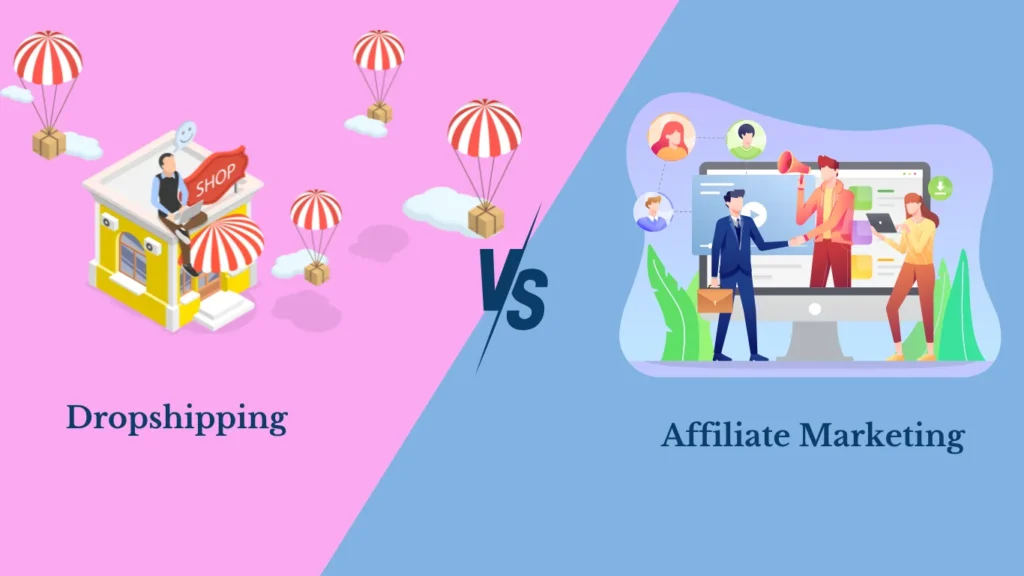
- Dropshipping presents lower risks compared to affiliate marketing. In dropshipping, retailers pay for merchandise only after a customer places an order, minimizing financial risks.
- It allows for higher profit margins as products are purchased at wholesale prices, and retailers can set their own retail prices.
- Cash flow is improved as payment is received instantly upon customer purchase. Moreover, dropshipping shops can offer competitive prices without investing in inventory or warehouse space.
- Conversely, affiliate marketing relies on merchants for product quality and can involve low commission rates, limited pricing control, and the risk of program termination or reputational damage due to fraudulent practices.
- Also, Affiliate marketing earnings may be affected by issues like links being taken down or hacked, which can affect your earnings in affiliate marketing.
Dropshipping vs Affiliate Marketing— how much does it cost to start?
One of the biggest advantages of affiliate marketing is that it requires little to no investment in inventory or shipping. You don’t have to worry about manufacturing, storing, or shipping products as an affiliate.
On the other hand, dropshipping has low startup costs are one of the biggest advantages of dropshipping. You only pay for products when a customer orders them, so you don’t have to invest in inventory upfront. Here we share how much it costs to start Dropshipping vs Affiliate Marketing in India.
How much does it cost to start dropshipping business in India
The best part about dropshipping is that it’s very low-cost to start. There are no upfront inventory costs or warehousing expenses to worry about. However, there are still some essential expenses to consider.
- E-commerce platform fee: It can range anywhere between ₹29 to a couple of thousand rupees per month based on your choice of platform.
- Dropshipping platform fee: Consider an average cost of ₹499/ month. However, it will go up or down based on the platform.
- Product costs: This will be your major expense/ investment.
- Marketing and advertising: You won’t have to pay anything for organic marketing. However, for performance marketing, you can keep a budget of ₹1000-₹2000/ month to start with.
- Domain name and website design: Some platforms might offer you a free domain name with their plans. The design cost can start from ₹5000 and will go up based on the complexities.
Excluding the product cost, have an additional ₹10,000-₹25,000 to start your dropshipping business smoothly.
How much does it cost to start affiliate Marketing business in India
Affiliate marketing has a low barrier to entry. You do not need to develop, manufacture, or ship any products. You simply need to promote other companies’ products and services on your website or social media platforms to earn a commission. The only costs are for your domain name, web hosting, and marketing efforts.
- Domain name: Registering a domain name for your website, which usually costs around ₹500 to ₹2,000 per year, depending on the domain registrar and the domain name’s popularity.
- Web Hosting: Hosting your website on a server, which can range from ₹1,000 to ₹10,000 or more per year, depending on the hosting provider and the plan you choose.
- Marketing Efforts: To drive traffic to your affiliate offers, you may invest in various marketing methods like creating content, using social media, email marketing, and paid ads. These efforts might cost around ₹10,000 to ₹50,000 per month.
Dropshipping vs Affiliate Marketing—which one is better?
When deciding between dropshipping and affiliate marketing, it’s essential to consider your priorities. If you value low startup costs and flexible work hours, affiliate marketing could be a great fit. Just remember, commission rates are usually low, so making substantial income requires generating a high volume of sales.
On the other hand, if you prioritize a wider product selection and scalability, dropshipping might be the way to go. With dropshipping, you have more control over the products you sell and can potentially scale your business more easily.
Dropshipping is better than Affiliate Marketing for:
Total Control Over Business Operations:
Dropshipping allows you to choose the products you sell, giving you more control over your business’s offerings. If you have a specific niche or product category you’re passionate about, dropshipping allows you to curate your inventory accordingly.
Higher Profit Margins and Revenue Potential:
While dropshipping still involves costs such as product sourcing and marketing, you have the potential to earn higher profit margins compared to affiliate marketing. Since you set your prices, successful dropshipping businesses can achieve greater profitability per sale.
Customizable Branding and Marketing:
With dropshipping, you can create a unique brand by designing your website and packaging to reflect your values. This also involves promoting your brand through social media, partnering with influencers, and optimizing for search engines. If you’re into crafting your brand’s image and trying out different marketing strategies, dropshipping is a great fit for you.
Direct Customer Interaction and Relationship Building:
Dropshipping puts you in direct contact with customers, handling inquiries, concerns, and returns yourself. If you’re passionate about providing top-notch customer service and building relationships, dropshipping offers more hands-on interaction compared to affiliate marketing.
Affiliate Marketing is better than Dropshipping for:
Low-Cost Entrepreneurs:
If you’re starting on a budget, affiliate marketing offers lower startup costs as you don’t need to invest in inventory. This makes it an attractive option for those looking to minimize upfront expenses.
Time-Conscious Individuals:
With affiliate marketing, you can attain passive income without the time-consuming tasks involved in managing customer support and supplier relationships required in dropshipping. This enables you to dedicate more time to creating content and promoting affiliate products.
Passionate Niche Explorers:
If your priority is finding a niche you’re passionate about and writing or creating content around products you love, affiliate marketing provides the flexibility to explore various niches and promote products that resonate with your interests.
Seekers of Passive Income:
Affiliate marketing is well-suited for individuals looking to earn passive income. Once you’ve created content promoting affiliate products, you can continue to earn commissions from sales generated through your affiliate links without ongoing management of inventory or customer support.
- The choice between Dropshipping and Affiliate Marketing depends on your priorities. If you value total control over pricing and operations, opt for Dropshipping.
- However, if your focus is on finding a niche you’re passionate about and earning passive income, Affiliate Marketing is the better option.
How Qikink helps you start dropshipping business for free
- Free to Use: Beginners can use Qikink for free for a lifetime, with payment required only when placing an order.
- Effortless Inventory Management: Qikink handles inventory management efficiently by printing products on-demand, offering real-time tracking, and ensuring timely inventory replenishment.

- No Initial Investment: Qikink allows beginners to start their dropshipping journey without any upfront costs or monthly fees. Entrepreneurs only pay for products when they receive orders, reducing financial risk.

- Wide range of Product Selection: Qikink offers a large print-on-demand catalogue, allowing entrepreneurs to choose products that resonate with their target audience.

- Easy Integration: Qikink seamlessly integrates with Shopify and WooCommerce, providing access to a wide range of products, including apparel, accessories, and home goods.
- Competitive Pricing: Qikink provides competitive pricing, enabling beginners to set favourable prices and earn good profit margins.
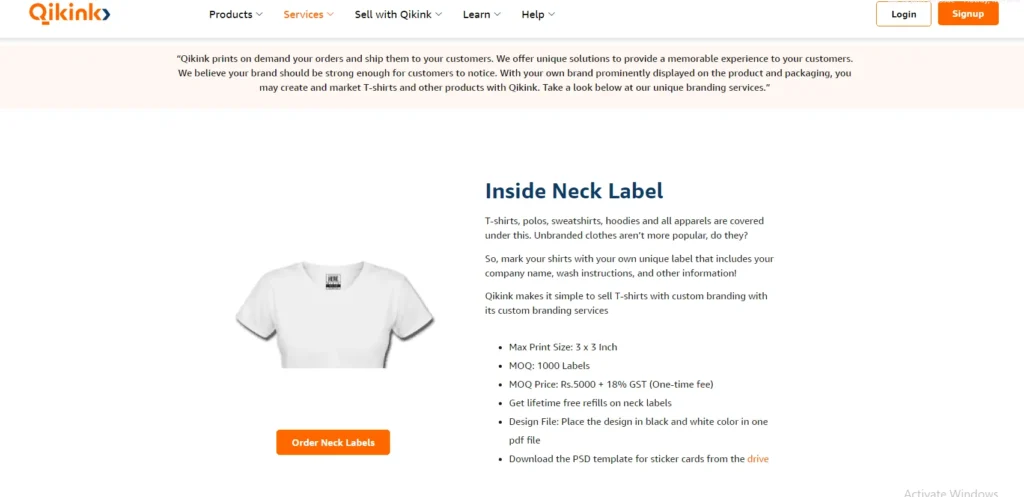
- Custom Branding Services: Qikink offers free branding with entrepreneurs’ logos on shipments and customization options, ensuring high customer satisfaction.
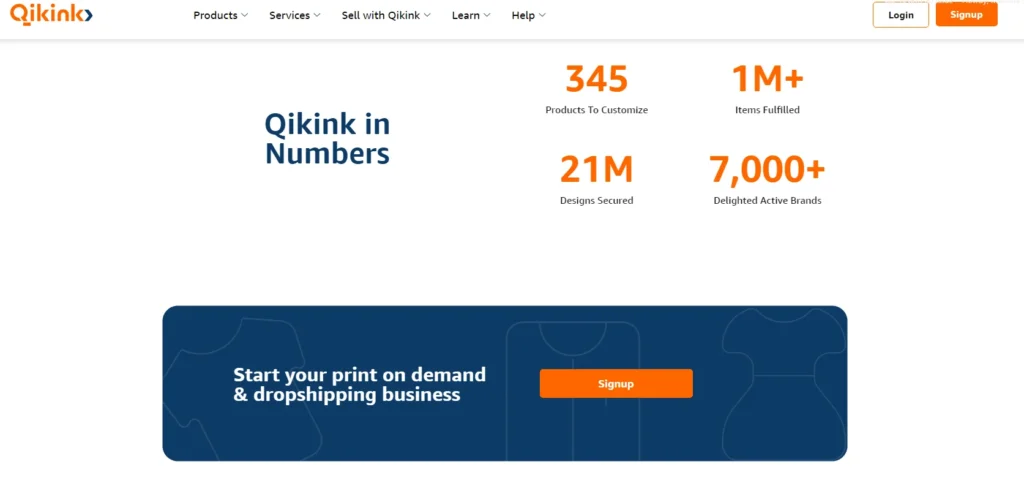
- Low-Risk Business Model: With no upfront costs or inventory concerns, Qikink provides a low-risk option for beginners entering the dropshipping business. At Qikink, we serve 7,000+ active online brands monthly and have fulfilled 1 million+ print-on-demand products across India.
Sign up with Qikink, and start your dropshipping business now!






























